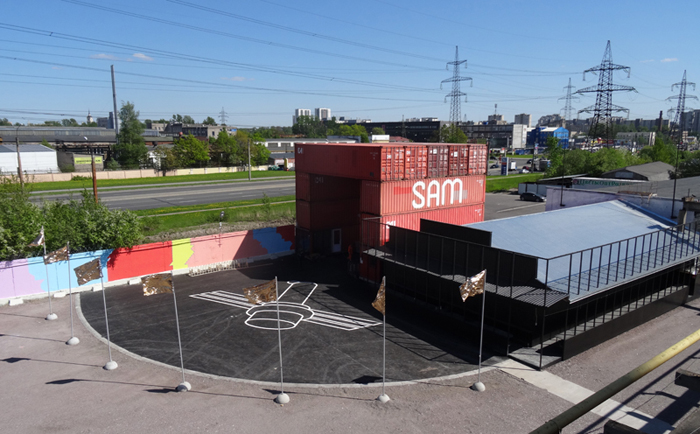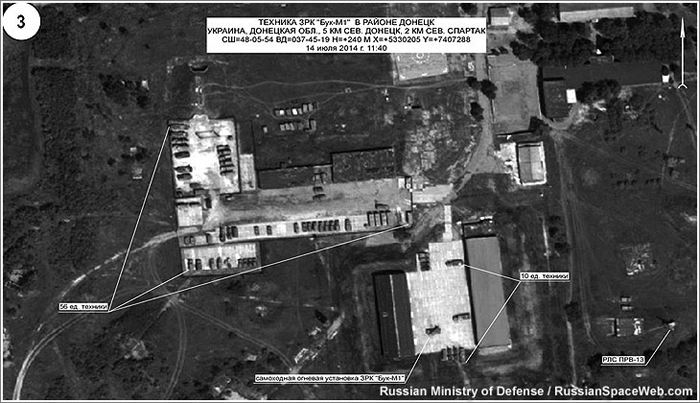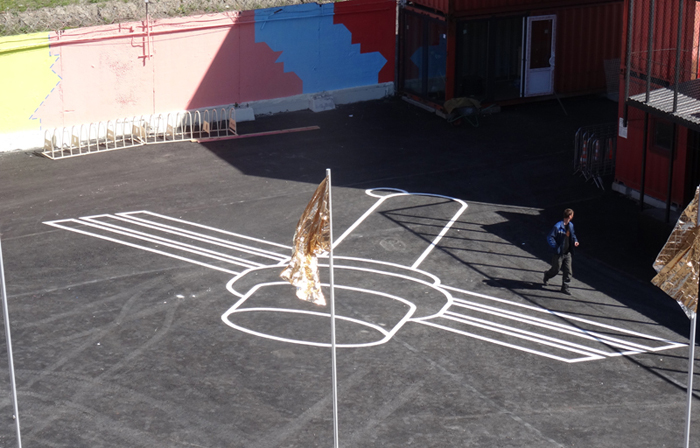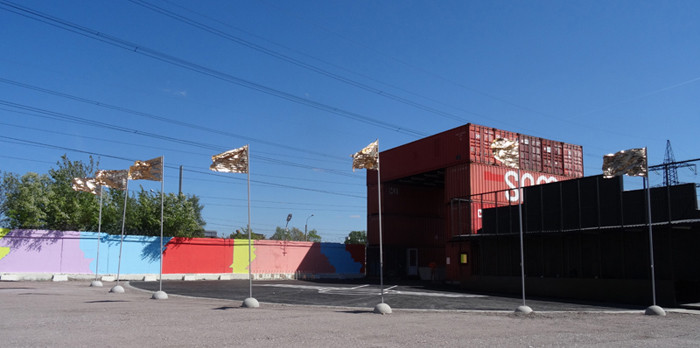
Last week I was in St Petersburg, Russia, for the opening of the Street Art Museum’s Summer Show, Crossing Borders / Crossing Boundaries, curated by Rafael Schacter and including work by Jazoo Yang, Brad Downey, Filippo Minelli, Clemens Behr, Merijn Hos, Rob Pinney, and many others.
For the show I installed a Satellite Shadow – a 1:1 outline of a Russian reconnaissance satellite, the Persona / Kosmos-2486.
Like the Drone Shadows, the Satellite Shadow references something which, while it may be directly overhead, remains completely invisible to us, obscured by atmospheric interference, political secrecy, and technological superiority. Nevertheless, its intensely connected to us, as a fellow traveller in the electromagnetic spectrum and a participant in our information system.
The first Persona satellite was launched in 2009 as Kosmos-2441, the first of a new generation of military surveillance satellites, but it apparently failed shortly after entering orbit. It’s successor, Kosmos-2486, launched in June 2013, and made its first public intervention in July of the following year, when the Russian Ministry of Defence took the highly unusual step of releasing imagery from a classified satellite:

This release followed the destruction of Malaysian Airlines Flight 17 over the Ukraine, and was part of an information war between Russia, the Ukraine – and potentially the USA. According to RussianSpaceWeb:
On July 21, the Russian Ministry of Defense released a series of satellite images to support the Russian version of events, blaming Ukraine for the tragedy. The Russian officials presented these photos as a proof that Ukraine could’ve been in control of the missile battery responsible for the MH17 disaster. The Ukrainian authorities responded nine days later, claiming that the Russian satellite photos had been either doctored or mislabeled to shift the blame to Ukraine. However the time indicated on Russian photographs could be checked against predicted passes over the region of a few Russian imaging satellites. It appeared that the time indicated on three of these photos had matched the time when the second Persona (a.k.a. Kosmos-2486) had flown over the area. The time on two other photos was matching the pass of Persona’s “civilian cousin” — Resurs-P No. 1. If these estimates are correct, it would be the first time photos from Persona had been publicly released. It could also be the first publicly released images from a currently operational Russian reconnaissance satellite.
Interestingly, Russian press-releases on the subject also went into great length to “expose” the origin of satellite images provided by the Ukrainian authorities. The Russian Ministry of Defense said that the Ukrainian satellites Sich-1 and Sich-2 had not flown over the crash site on July 12, 16, 17 and 18. Such an “argument” indicated that the authors of the document had been unaware that both of these satellites had been out of commission. The Russian document went on to say that a US KeyHole satellite had flown over the area at the time, thus confirming that the US had also made a rare move of releasing images from a currently operational classified spacecraft. Obviously, in both cases, it is unclear whether these images were demonstrating the full resolution achievable with the satellites’ cameras.
And so the apparent imagery generated by two pieces of unapparent technology – the Persona and Keyhole satellites – designed for maximum resolution, are introduced into the public sphere with both their evidentiary value and their resolutions intentionally degraded. The most advanced seeing machines ever developed by humanity peer down at the Earth, and nothing is clear.

Alongside the Satellite Shadow, we also installed a ring of Flags for No Nations. As the weekend progressed they were slowly and beautifully shredded by the winds.

Comments are closed. Feel free to email if you have something to say, or leave a trackback from your own site.